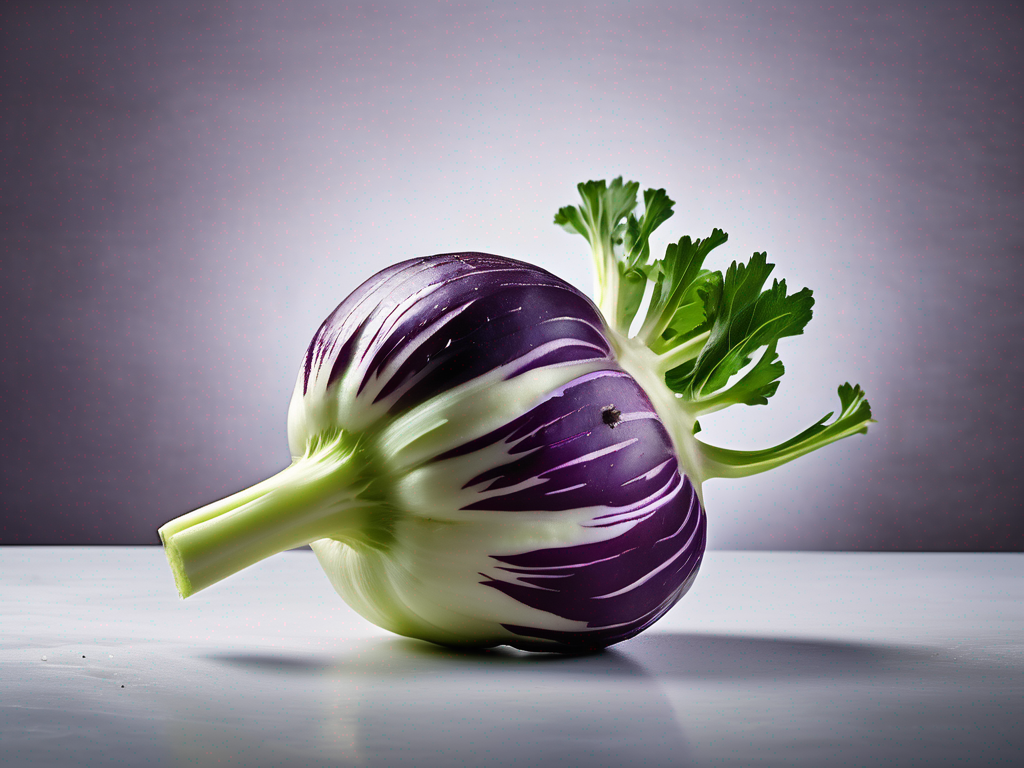
Is Your Kohlrabi Still Good to Eat? A Guide to Checking for Spoilage
Get Your Free Food Safety Cheat Sheet
30 most common foods with instant answers. Print it and stick it on your fridge—completely free!
Is Your Kohlrabi Still Good to Eat? A Guide to Checking for Spoilage
Kohlrabi is a versatile and nutritious vegetable with a unique flavor that can be enjoyed in a variety of dishes. However, like any fresh produce, kohlrabi can spoil if not stored properly. In this guide, we will discuss how to tell if your kohlrabi has gone bad and provide tips on how to extend its shelf life. (Kohlrabi)
Signs of Spoiled Kohlrabi
When it comes to determining if your kohlrabi is still safe to eat, there are several key indicators of spoilage to look out for. Here are some common signs that your kohlrabi may have gone bad:
1. Mold or Mildew
- Check the surface of the kohlrabi for any signs of mold or mildew growth. Mold can appear as fuzzy patches of green, white, or black spots.
- If you notice mold on your kohlrabi, it is best to discard it immediately to prevent the spread of harmful bacteria.
2. Soft or Squishy Texture
- Gently squeeze the kohlrabi to see if it feels soft or mushy. A firm and solid texture is a good indication that the kohlrabi is still fresh.
- If the kohlrabi feels soft or squishy to the touch, it may be past its prime and should be thrown away.
3. Discoloration
- Look for any discoloration on the skin of the kohlrabi. Brown, black, or dark spots can be a sign of decay.
- Fresh kohlrabi should have a vibrant, pale green or purple skin without any blemishes.
4. Unpleasant Odor
- Take a whiff of the kohlrabi. If it emits a foul or sour smell, it is likely spoiled.
- Fresh kohlrabi should have a mild, slightly sweet aroma.
5. Slimy Texture
- Run your fingers over the surface of the kohlrabi. If it feels slimy or sticky, it is a sign of bacterial growth.
- A slimy texture is a clear indication that the kohlrabi is no longer safe to consume.
Proper Storage Tips for Kohlrabi
To prolong the freshness of your kohlrabi and prevent spoilage, it is essential to store it correctly. Here are some practical tips for storing kohlrabi:
1. Refrigeration
- Store whole, unpeeled kohlrabi in the crisper drawer of your refrigerator. Keep it away from fruits that produce ethylene gas, such as apples and bananas, as this can cause the kohlrabi to ripen too quickly.
- Peeled or chopped kohlrabi should be stored in an airtight container or resealable bag in the refrigerator.
2. Temperature and Humidity
- Kohlrabi thrives in cool, humid conditions. Aim to store it at a temperature of around 32-40°F (0-4°C) with a humidity level of 90-95%.
- Avoid storing kohlrabi near heat sources or in direct sunlight, as this can cause it to wilt and spoil more quickly.
3. Proper Ventilation
- Allow for proper air circulation around the kohlrabi to prevent the buildup of excess moisture, which can lead to rotting.
- If storing kohlrabi in a plastic bag, poke a few holes in the bag to ensure adequate ventilation.
4. Check Regularly
- Periodically inspect your kohlrabi for any signs of spoilage. Remove any damaged or decaying pieces to prevent the spread of bacteria.
- Use the oldest kohlrabi first to ensure that none goes to waste.
Conclusion
In conclusion, being able to identify the signs of spoiled kohlrabi is essential for maintaining food safety and preventing foodborne illness. By following the tips outlined in this guide and storing your kohlrabi properly, you can enjoy this nutritious vegetable while ensuring its freshness and quality. Remember to always trust your senses and err on the side of caution when in doubt about the safety of your kohlrabi.
For more information on kohlrabi and other fresh produce, visit our kohlrabi page for recipes and storage tips. Stay informed, stay safe, and enjoy the goodness of fresh, healthy foods! (Kohlrabi)
Authoritative Food Safety References
These agencies and university labs inform every tip and health precaution we publish.
USDA FoodKeeper – Cold Storage Guidelines
Official refrigerator, freezer, and pantry timelines maintained by the U.S. Department of Agriculture.
Visit USDA FoodKeeperFDA Produce Safety Rule & Grower Guidance
Field-to-fridge handling practices that prevent contamination of fruits, vegetables, and leafy greens.
Visit FDA Produce SafetyCDC Foodborne Illness Prevention Hub
Surveillance-backed guidance on pathogens, symptoms, and steps to reduce foodborne illness risk.
Visit CDC Food SafetyUC Davis Postharvest Technology Center
University research detailing optimal storage atmospheres for produce after harvest.
Visit UC Davis PostharvestPenn State Extension – Home Food Preservation & Safety
Peer-reviewed extension bulletins on safe canning, chilling, and reheating practices.
Visit Penn State ExtensionGet Your Free Food Safety Cheat Sheet
30 most common foods with instant answers. Print it and stick it on your fridge—completely free! Want more? Upgrade to the complete guide with 70+ foods.
Scan your food directly and get instant safety info using our AI-powered camera feature.